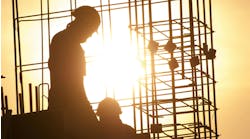WASHINGTON – Both the existing- and new-home markets will set records for 2001 and near-record activity is expected to continue in 2002, the National Association of Realtors said in January.
David Lereah, NAR’s chief economist, said housing outperformed the expectations of many analysts over the last year.
“With the exception of the uncertainty cast by the fallout of Sept. 11, our outlook for the housing market grew brighter as the year progressed,” Lereah said. “When we get the December data later this month (January), we expect to see total existing-home sales for 2001 to be 5.25 million, up 2.5% from 2000 and surpassing the previous record of 5.21 million set in 1999. Total sales will be fairly even this year, with existing-home sales projected to reach 5.23 million in 2002, down a negligible 0.5%.”
NAR also forecast new-home sales for 2001 to rise 2.5% from 2000 to a total of 902,000 units, surpassing the previous record of 885,000 set in 1998, then slip 3.2% this year to 874,000 units. Housing starts are expected to rise 1.7% to a total of 1.6 million units for 2001, and then decline by 4% this year to 1.54 million.
Lereah expects U.S. economic growth, as measured by the Gross Domestic Product, to rise to a positive 1.9% growth rate in the second quarter.
“Much of our economic activity is being sustained by the strong housing market, which will lead us out of the shallow recession which began last spring,” Lereah said. Consumer price inflation for 2002 should be only 1.8%.
The association projects the 30-year fixed mortgage interest rate to rise to 7.3% by the third quarter.
“Even with this fairly modest increase in mortgage interest rates, they will remain low by historical comparisons,” Lereah said. “However, the spread between fixed and adjustable rates has increased, meaning adjustable-rate mortgages may become more attractive to first-time homebuyers, especially in higher-cost markets.”
The association expected the national median existing-home price for 2001 to be $146,600, an increase of 5.5% over 2000, and then rise by 4% this year to $152,400. The typical new home price was projected to be $171,200 in 2001, up 1.3% from 2000, then rises by 4.7% this year to $179,200.
“The median new-home price for 2001 is depressed because we saw a pullback from the upper end of the market, but we expect this to improve this year as the economy recovers,” Lereah explained.
The association projects the unemployment rate to rise to 6.1% before it eases in the fourth quarter. Inflation-adjusted disposable personal income is forecast to grow 2.1% this year.
Meanwhile, the National Association of Home Builders was expecting more than 70,000 attendees to visit its International Builders’ Show Feb. 8-11 in Atlanta. NAHB called housing “still the shining star of an otherwise lackluster economy.”
In mid-January, builder and NAHB President Bruce Smith added, “The home-building industry held steadfast during the turbulent times last fall and will be coming out in numbers in Atlanta to gear up for what we expect to be another year of outstanding performance in housing construction.”

